Mamufacturer's Announcements
New FTIR sampling accessories from Specac provide routine sampling under and extremes of temperature and pressure.
We are also announcing a low-cost sampling accessory with a single reflection germanium ATR element.
Specac is pleased to introduce three new, world-class sampling devices for FTIR spectroscopy. These devices are all based on the successful and proven Golden Gate diamond ATR accessory. They comprise a low temperature diamond ATR top-plate for measurements approaching liquid nitrogen temperatures, a high pressure, high temperature diamond ATR top-plate for measurement of super critical fluids at temperatures of up to 300 oC, and a single reflection germanium ATR accessory for routine sampling.
The Golden Gate diamond ATR has proved to be extremely popular as a FTIR sampling device. This is due in part to the excellent physical characteristics of the diamond and the rugged construction of the accessory. The strength of the diamond allows high loads to be exerted to ensure good contact with the sample and means that it can be cleaned quite aggressively. The diamond is also very resistant to chemical attack. The natural diamond used in the Golden Gate is also high temperature metal bonded into place to avoid the use of a fixing glue that could be attacked by solvents [1].
The diamond also has very good thermal conductivity. This makes it ideal for ATR measurements at high or low temperatures because it can be heated or cooled rapidly. The high thermal conductivity of the diamond also ensures that there are no temperature gradients across the ATR element. To take full advantage of these properties Specac has introduced a cooled Golden Gate top-plate and a high pressure, high temperature Golden Gate top-plate.
The low temperature top-plate for the Golden Gate diamond ATR accessory
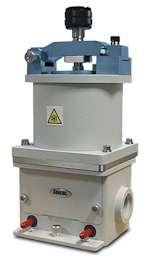
Figure 1.
Figure 1 shows the only ATR accessory offering routine analysis of samples approaching liquid nitrogen temperatures. This accessory can be used to study both solids and liquids and is ideal for the study of polymers, paints and other materials under very low temperature conditions.
The low temperature top-plate uses an insulated copper and steel dewar that allows rapid cooling with liquid nitrogen, dry ice, or ice salt mixtures. Intermediate temperatures can be accurately set using a built-in electrical heater. The heater is controlled using a Specac 3000 Series Temperature Controller. A typical experiment would involve cooling the sample with liquid nitrogen and then raising the temperature with the heater, obtaining spectra at regular temperature intervals. The spectrum of the diamond will change at very low temperatures, so it may be prudent to record background spectra of the accessory at the temperatures that samples will be measured.
For chemical resistance the diamond element is high temperature metal bonded in to a tungsten carbide support disk. There is no need to re-align this accessory at different temperatures as the unique design keeps the diamond in constant optical alignment across the working temperature range by eliminating the effects of thermal expansion and contraction. The Dewar assembly is sealed on to the top-plate using a replaceable thermally conducting gasket. This gasket removes the need for sealing compounds that risk contamination of the diamond and therefore the spectra.
To obtain high quality spectra with an ATR accessory pressure may be required on the sample to give the best contact with the crystal element, especially with this technique as the sample may move away from the diamond as it freezes. With this accessory the pressure is provided by the proven, rugged quick lock and release bridge of the Golden Gate diamond ATR accessory. This clamping device also has the added advantage of a built-in torque limiter to control the loads applied to the ATR crystal.
To illustrate how the spectra of samples are affected by low temperature, spectra of PTFE (figure 2) and carbon tetrachloride (figure 3) were collected at room temperature and then cooled. In both cases the accessory was cooled with liquid nitrogen and a background was measured before the sample was introduced. The PTFE was simply dropped on the diamond (the sample was a 5 mm diameter disk that had been punched from a PTFE sheet) and clamped in place. The Carbon Tetrachloride was injected on to the surface of the diamond using an insulated syringe and pressure applied with the clamp. To avoid frosting of the optical components the accessory was purged with dry nitrogen.
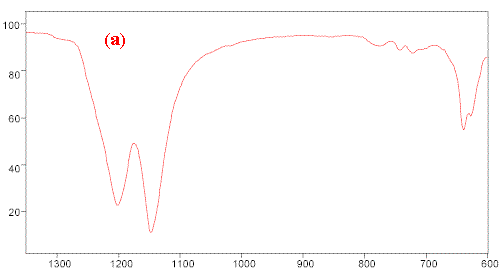
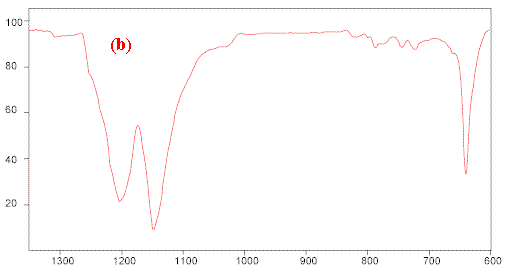
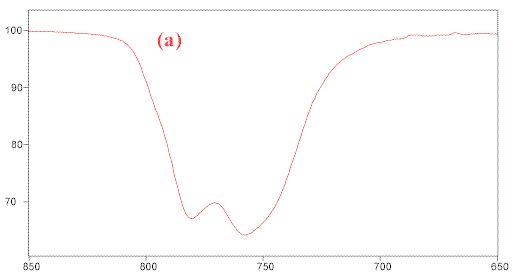
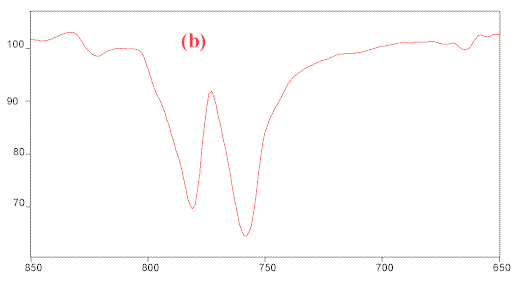
The high temperature, high pressure diamond ATR top-plate
The top plate for the Golden Gate diamond ATR accessory (Figure 4) has been designed primarily to measure supercritical fluids. The low volume sample space can be heated to 300 oC and be pressurized up to 5000 p.s.i.. The accessory has a thermal protection system to prevent thermal runaway and uses a special removable stainless steel sampling head for chemical resistance. To test the permeability and performance of polymers under pressure this removable head can be coated with the polymer under test by spin casting, or casting from a solvent mixture [2].
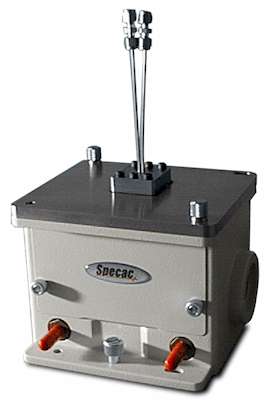
Figure 4.
The top-plate can be used either for static samples or as a flow system. The excellent thermal conduction of the accessory, particularly the diamond ATR crystal means that temperature equilibration is fast and temperature measurement is accurate.
Germanium Process
Another ATR technique that has been increasing in popularity is the use of single reflection germanium crystals. The germanium elements used in these accessories, though not as tough as diamond, offer some advantages over zinc selenide or KRS-5. Germanium is more chemically resistant than these other materials and the crystal is less prone to scratching (though it may shatter if dropped). Specac has produced a new germanium ATR that combines a sampling clamping device derived from the Golden Gate with a high throughput germanium ATR element.
The Silver Gate single reflection ATR accessory
The Silver Gate (Figure 5) is a new, high optical throughput FTIR sampling device capable of measuring solids, liquids, and pastes quickly and easily with little or no sample preparation. Measurement time and sample processing are very rapid because of the extraordinarily high optical throughput, and the simple, efficient sampling design. The optical throughput is high as there are only three optical components in the system.
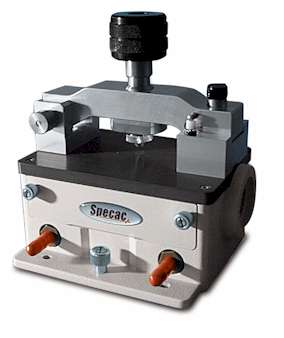
Figure 5.
To reduce costs the Silver Gate single reflection ATR accessory is of a fixed configuration. Unlike the Golden Gate accessory, the top-plate can not be changed routinely. However, this design not only makes the accessory more affordable it also makes it easier to use, an important factor in the quality control environment it was designed for. The standard accessory has a germanium crystal, but a zinc selenide version is also available.
As opposed to some other accessories, the standard germanium crystal has a flat sampling surface to optimize contact with the sample and to avoid point loading. Being made of germanium, the crystal is chemically resistant. Also, it is bonded into a hard-anodized top-plate for maximum resistance to chemical attack. Solid sampling is extremely easy as the Silver Gate single reflection ATR accessory uses the same sample rugged, quick lock and release bridge as the popular Golden Gate diamond ATR accessory. This clamping system includes an integral torque limiter to control the loads applied to the ATR crystal, increasing reproducibility and the ease of use.
The germanium crystal has a higher refractive index than ZnSe and KRS-5. This decreases the depth of penetration into the sample and makes the accessory useful for highly absorbing samples. To illustrate this spectra of a black modem cable (figure 6) and a black floppy disk case (figure 7) were obtained with the Silver Gate ATR.
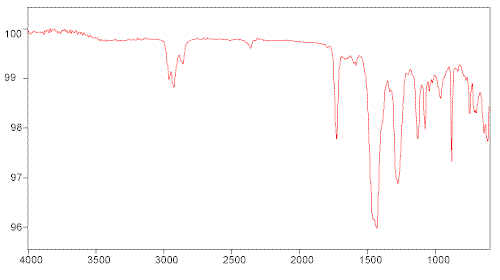
| Figure 6. Spectrum of black cable. |
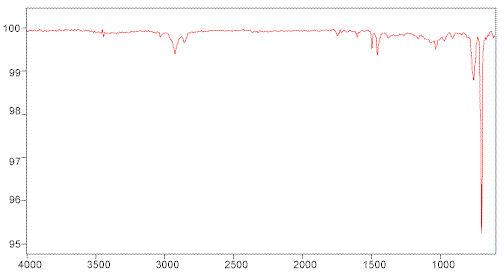
| Figure 7. Spectrum of floppy disc case. |
References
- D. Coombs, Int.J.Vib.Spect.,[www.ijvs.com] 2, 2, 3-4 (1998)
- S.G. Kazarian, B.J. Briscoe, D.Coombs, G. Poulter, Spectroscopy Europe, 11/3, 12 (1999)
For further information contact
Chris Thorne
Specac Ltd
River House,
97 Cray Avenue,
St. Mary Cray, Orpington,
Kent. BR5 4HE
Tel: + 44 (0) 1689 873134
E-mail: chris.thorne [at] specac.co.uk
Web site: www.specac.com

